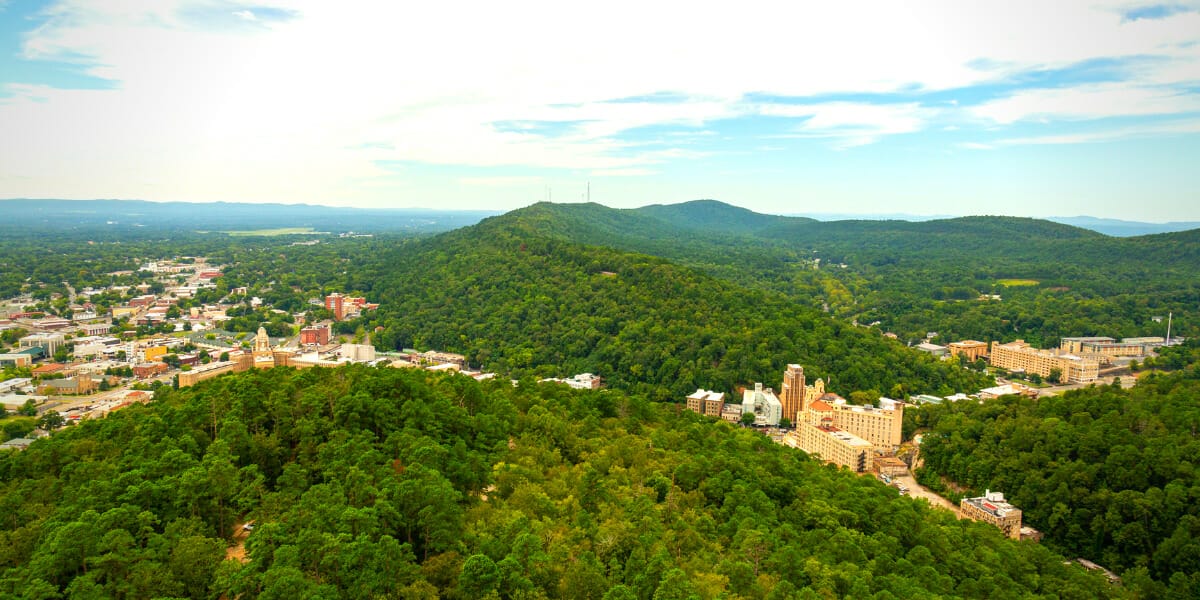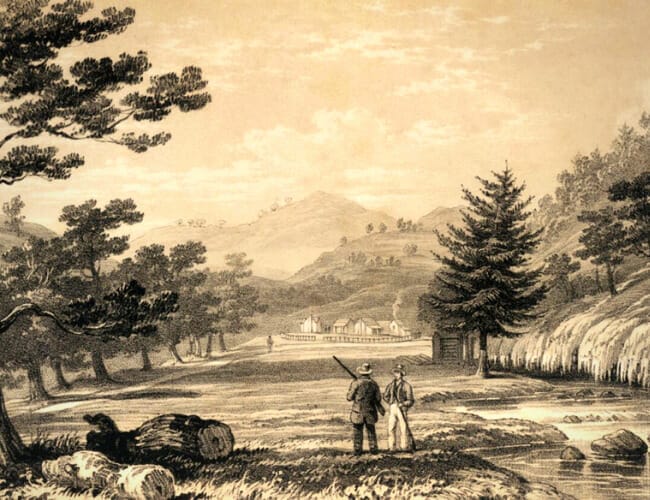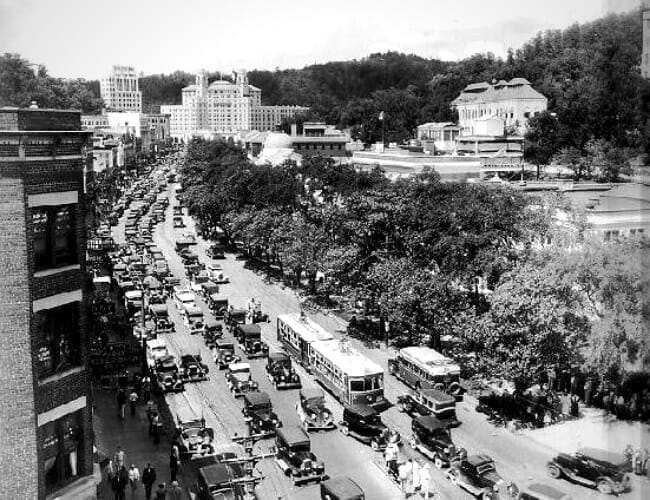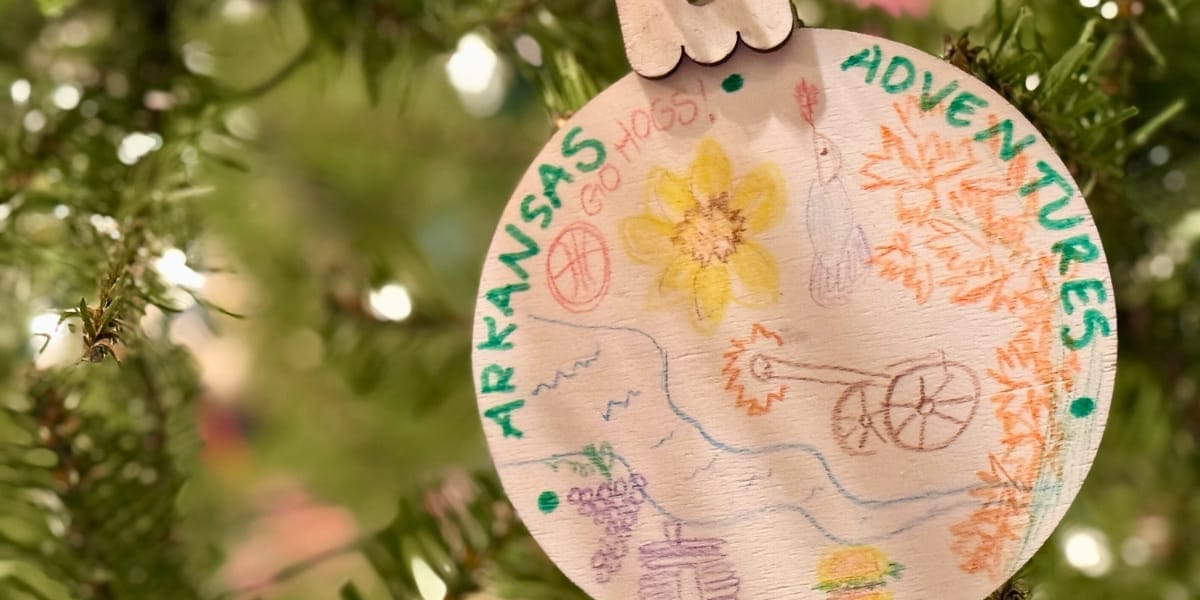

Uh oh...
It appears that you're using a severely outdated version of Safari on Windows. Many features won't work correctly, and functionality can't be guaranteed. Please try viewing this website in Edge, Mozilla, Chrome, or another modern browser. Sorry for any inconvenience this may have caused!
Read More about this safari issue.

Many are making family travel plans for the year. One of the most searched travel options is our National Park System, and one of the travel destinations in Arkansas most searched is Hot Springs National Park.

History of Hot Springs National Park
The history of Hot Springs National Park (HSNP) dates back at least 3,000 years when five different Native American tribes used these hills to gather novaculite rock, also known as Arkansas whetstone. These tribes would use the stone to make materials for their day-to-day living like weaponry and building tools and found it a valuable commerce tool in trading and establishing an economic value.
Part of the exploration President Thomas Jefferson commissioned for explorers Dunbar and Hunter of the newly gained Louisiana Purchase included a specific mission to explore the tales of the hot springs north of the Ouachita River. What Dunbar and Hunter found were spring areas with shack-looking buildings built around them. While no one inhabited them at the time, it was evident that this was a transient area that attracted visitors.

A snowstorm kept the explorers in the area longer than expected, so they brought back minerals, observations, and creatures in these waters they had never seen. The attention of the springs grew, and as people came to visit, it became apparent that the hot springs would need protection. The thought was that regulation would protect the hot springs and land around them for all Americans to enjoy regardless of age, gender, race, ethnicity or economic status. On April 20, 1832, the Hot Springs Reservation was established. It was the first time the U.S. Government set protected land, and their goal was to protect the water.
People felt the water had a curative nature and began overusing it and making it more accessible to others. Since it was coming out of the ground at 143 degrees, bathhouse owners moved the water into troughs, creating mud pools. They also built shacks and later wooden bathhouse structures. In the mid-1800s, an unofficial “Bathhouse Row” was developed, replacing the wooded structures with ornate and lavish buildings that created an experience around the pools adding hotels, boutiques, restaurants and spa services.

Even while transportation was still blossoming, roads were not paved, and no one had a cellphone. Word-of-mouth was the greatest asset to Bathhouse Row and the National Reservation. The father of the National Park system and her first Director, Stephen Mather, was a big advocate of the springs and knew its status needed to change for stronger protection and preservation. So, on March 4, 1921, Congress passed an Act to officially change the name to Hot Springs National Park (HSNP).
Public bathing practices began to shift in the mid-1960s, and some of the bathhouses started to close, leaving many empty by the mid-80s. It was time for a pivot and change to focus on the modern visitor. The government established a program to lease the 100-year-old historic buildings of Bathhouse Row to new businesses.

Highlights of Hot Springs National Park
- 5,500 protected acres
- 26 miles of trails
- Two scenic drives that go to the top of two mountains
- Mountain Tower and Observation Deck
- Superior Bathhouse – brewery
- Hale Bathhouse – luxurious boutique hotel
- Fordyce Bathhouse – HSNP Visitor Center and Museum, only historic bathhouse that the public can freely tour
- Ozark Bathhouse – cultural center hosting art from recent Artists in Residence program
- Quapaw Bathhouse – modern-day spa
- Buckstaff Bathhouse – historical hydropathic bathing experience, continual service since 1912
- Lamar Bathhouse – HSNP store and gift shop

What sets Hot Springs National Park apart from other National sites?
- Home to the only brewery inside a National Park.
- Human factor and fusion. The main thing that sets HSNP aside from other National Park properties is the fusion of city and nature. Here you come to get in the middle of everything, even while getting away.
- Take home the most significant resource. Most National Parks and Arkansas State Parks operate under a “leave no trace” philosophy. HSNP encourages you to fill up jugs of water to take home.
- Hot springs are not volcanically heated. Most springs located in other National Parks, especially along the coasts, are heated from volcanic activity. The more than 40 hot springs in the park form from water pulled 6,000 feet into the ground.

We do the work.
You check your email.
Sign up for our weekly e-news.
Get stories sent straight to your inbox!












 Leave a Reply
Leave a Reply
[…] Visit Direct Link […]
[…] Hot Springs National Park | Hot Springs […]
[…] are covered with murals from bike trails to former speakeasy brick walls, many adjacent to the National Park and Bathhouse Row, including headlines commemorating a historical baseball […]
[…] Hot Springs National Park […]
[…] Hot Springs National Park – The park has a wide range of unique flora and fauna, including over 20 species of ferns and several rare orchids. The thermal pools have long been an attraction for guests far and wide, leaving many believing the dense forest of the oldest National Park lands are perfect dwelling spaces for the ape-like creature with night-piercing eyes. […]
[…] Hot Springs National Park […]
[…] Hot Springs National Park […]
[…] the Hot Springs Baseball Trail Visit Majestic Park 19-Hour Getaway to Hot Springs Hot Springs National Park SQZBX Brewery & Pizza in Hot Springs Best Café and Bar is the Newest Gem in Hot Springs […]
[…] One main thing South Arkansas visitors will notice about these restaurants is that many are in old buildings that show the wear of decades, nearly a century for some, of smoking and serving meats. Barbecued goat meat started the barbecue tradition in these parts and attracted tourists to travel lodges, motorcoach resorts, and sacred springs. […]
[…] Hot Springs National Park for any reason- history, touring the Arlington, spas, shopping, outdoor recreation, restaurants, downtown strolls, festivals—you name it! […]
[…] on a previous trip, and though Lake Hamilton doesn’t have an Arkansas State Park, it borders Hot Springs National Park and is definitely worth a visit. This time, our travels will take us to Arkansas’s largest […]
[…] better way to warm up than soaking in the natural thermal springs in Hot Springs, Arkansas? Relax in the soothing waters and let the steam chase away the winter chill. Bonus: it’s a […]
[…] The Ozark Mountains – Rolling hills and dogwood blooms that take your breath away. 2. Hot Springs National Park – Healing waters and historic bathhouses in downtown Hot Springs. 3. Petit Jean Mountain – My […]